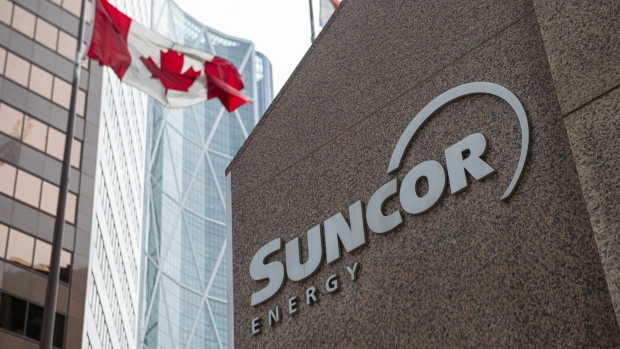Feb 22, 2024
The Daily Chase: Suncor earnings and a big oil merger deal
, BNN Bloomberg

Here are five things you need to know this morning:
Enerplus agrees to sell itself: After earlier reports suggested another suitor was lining up a bid, Calgary-based oil company Enerplus Corp. announced it has struck a deal to sell itself to U.S. shale oil driller Chord Energy Group for US$3.7 billion in cash and stock, and the assumption of billions of dollars of debt. Enerplus had previously been rumoured to be a target of Oklahoma-based Devon Energy, but Chord has emerged as the winner. Shares in both companies were up in premarket trading, and that makes sense according to Stifel analyst Cody Kwong, who calls it an “attractive valuation” for Enerplus shareholders and says the combined firm is “looking attractive at first blush.” While Enerplus has a lot of assets, the main appeal for Chord is to get its hands on Enerplus’ assets in the Bakken shale oil formation, which is proving to be a hot commodity for companies looking to boost production in the energy sector. It’s the second big oil deal in as many weeks in the area, after Diamondback Energy agreed to buy fellow Texas driller Endeavor Energy for $26B last week.
Suncor output surges: Elsewhere in the oil sector, Canada’s biggest integrated oil company posted quarterly results before markets opened on Thursday, as Suncor revealed its earnings rose to $2.82 billion in the fourth quarter. That’s up from $2.74 billion a year ago. While the financial numbers were mixed, on the output side the numbers were all trending in one direction: up. The company cranked out a total upstream production of 808,100 barrels of oil equivalent per day, the second-highest quarter in the company's history, while its oilsands unit specifically pumped out 757,400 barrels a day. That’s an all-time record.
Retail sales surprise to the upside: New numbers out of Statistics Canada this morning show that consumers were willing to open their wallets and spend more this holiday season. Retail sales for December were released on Thursday morning and they showed that Canadian retailers booked just over $67 billion in sales during the busy month for holiday shopping. That was an increase of 0.9 per cent from November’s level and more than what economists were expecting. The uptick in sales wasn’t just an inflation story either as sales were up both in pricing terms but also in volume terms – meaning people were buying more stuff, not just paying more for the same amount of stuff. Sales at car and parts dealers led the way, but just about every type of retailer saw a boost during the month, from gas stations to furniture stores, food and beverage sellers and general merchandise. If there was a weakness in the numbers, it was likely on the online side, where e-commerce sales unexpectedly fell by 3.6 per cent during the month to $3.7 billion.
Loblaw earnings: Canada’s biggest grocery and drug store operator posted quarterly results on Thursday that showed higher revenues and profits in virtually all its units, even as beneath the surface signs of a consumer slowdown are starting to show. Total revenue at Loblaw came in at $14.53 billion for the quarter, slightly up from $14.01 billion a year ago. And adjusted earnings rose to $2 per share from $1.76 last year. Same store sales grew by two per cent on the grocery side of the business, a slowdown from eight per cent this time last year. The company says foot traffic in its grocery stores is increasing, but the average size and value of the typical shopping basket decreased, Loblaw said. In yet another sign that consumers are getting choosier than ever with their spending dollars, Loblaw says its discount brands including No Frills and Maxi continue to be among its strongest performers.
Nikkei hits all-time high: It took 34 years, but investors who found the superhuman patience to stick with Japan’s benchmark stock index through years of underperformance were finally rewarded on Thursday as the Nikkei broke through the level it was at in 1989 and touched a new all-time high above 39,000 points. Back when Billy Joel’s We Didn’t Start The Fire was topping the charts, Japan’s stock market was the most valuable on earth, with its market cap making up 37 per cent of the world’s equity valuations. That was more than the U.S. share of 29 per cent, but it was quickly followed by a massive plunge in the value of Japanese equities as multiple Yen crises coupled with decades of stagflation to make Japan’s stock market a waste of time for international investors for years. In local currency terms, a buy-and-hold investor who bought the Nikkei at the top in late 1989 and held on through to 2014 would have lost about two-thirds of their money. But the Nikkei has almost doubled since the pandemic began, even as almost 40 per cent of Nikkei-listed shares are still below their book value. Time will tell what the future will bring, but after multiple lost decades for investors, the Nikkei’s return to relevance is worth watching.